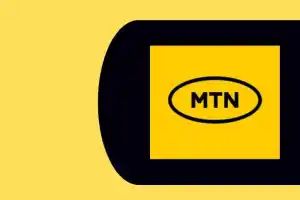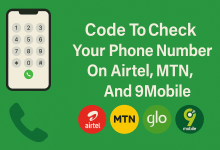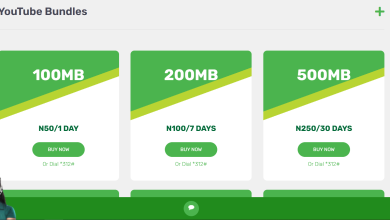
MTN has reduced their data usage and updated their data plans
It’s no longer news that our service providers, including MTN, Airtel, Glo, and 9Mobile, have increased their tariffs on calls, data, and SMS, with a maximum increase of 50% as approved by the Nigerian Communications Commission (NCC). This means that the cost of calls, data bundles, and SMS messages is now higher for MTN subscribers. The good news is that MTN Nigeria has reduced their data consumption and updated their data plans.
Apart from their recent apologies in February for their mistake on the 200% data price hike, they recently reduced the cost at which we purchase these data plans. We can all recall how long 10GB lasts, but early this year, I used up 11GB in a single day using WhatsApp exclusively. Things I used to perform that didn’t use up to 1GB per day now use about 11GB. Not only is the rate of consumption an issue, but the price of these data plans has gone up.
MTN Renewed Data plans and consumption rates
Data plan prices were initially increased due to the 50% price hike as approved by the Nigerian Communications Commission (NCC) on January 20th, 2025. MTN Nigeria and some other network providers took it too far. To the extent that 400GB that was purchased for N50,000 became 480GB for N120,000.
They began to be cursed at and called out on social media, and others began to cry or complain. As part of their excellent customer service, MTN then renews the data cost. increasing its affordability and cost.
Additionally, the data balance exhausts at the same rate as before. If you are perceptive, you would see that data is somewhat less expensive now than it was previously. the rate of consumption as well. The duration of data plans has increased.
How To Access The New MTN Cheap Data Plans
MTN made their new plans available to all users by providing a code. The code is not new; Airtel has been using it for a long time. To access a less expensive plan, enter *121# instead of the standard *313#. Data plans are now more economical, longer-lasting, and renewed.
How to manage the new Data plans to make it last longer
Your MTN data might be draining quickly due to several factors, including background app activity, data-intensive apps like streaming services and social media, and the type of websites you visit. Using Wi-Fi, disabling background data for apps, and using data-saving browser features can help reduce data consumption.
Other than what you already know, this is nothing new. I have already written numerous posts on this blog explaining how to accomplish this. Please read this if you use a router, broadband, Mifi, or a tiny 4G WiFi.
I didn’t write about this in my earlier publications. The majority of this Wi-Fi gives us access to various forms of internet connectivity, including 5G broadband. There will be 2.4G, 5G, and 4G. To help you choose the Wi-Fi setting to use, I will describe the many types of them.
Types of internet connectivity
In the context of internet connectivity, “2.4G”, “5G”, “4G LTE”, and “5G” refer to different aspects of wireless technology. “2.4G” and “5G” refer to Wi-Fi frequency bands, while “4G LTE” and “5G” refer to cellular network generations.
2.4G and 5G (Wi-Fi Frequency Bands):
The radio frequency bands that Wi-Fi routers and access points use are indicated by these numbers. Although 2.4 GHz is a frequency band that has stronger penetration through barriers and wider coverage, it also encounters more interference. Because 5 GHz has reduced latency and quicker speeds, it is more appropriate for bandwidth-intensive activities like online gaming and video streaming.
4G LTE and 5G (Cellular Network Generations):
The technology that mobile networks utilize to offer data connectivity is referred to by these terms. The fourth generation of mobile network technology is called 4G LTE (Long-Term Evolution), while the next generation is called 5G. Under optimal circumstances, 4G LTE may achieve download speeds of up to 1 Gbps, with average speeds of 100 Mbps. With speeds of up to 20 Gbps, 5G is intended to support a lot more devices.
Relationship between Wi-Fi and Cellular Networks:
When a device connects to the internet through a router, it uses Wi-Fi to connect to the router. The router can then connect to the internet through a cellular network (4G LTE or 5G) if it’s a mobile Wi-Fi router or through a wired connection (like a cable modem) if it’s a home router.
It is very important to change your network type. Aside from the 2.4G, 4G, and 5G, how data is being served differs. We have different ways we receive data from our networks. This includes 5G, 4G or LTE, 3G, and 2G. Let me explain further.
Internet Connectivity Types and Their Usage
5G is obviously quicker and uses data more quickly than 4G, which is also faster but slower than 5G. As time goes on, the same is true for 2G and 3G. Choose the higher 5G network if you require a fast network that can make high-quality calls, stream, download, and upload data quickly.
Although your data may be used more quickly, you will still receive excellent network and quality service. This does not imply that 3G and 4G are inferior. Due to its slow service and subpar network, 2G is quite bad and bothersome; thus, I won’t suggest it. Although 4G is advised, you will still have a fast network and high-quality calls, streaming, images, and videos. Choose the 3G network if you wish to save more data.
If all you do is use social media, such as WhatsApp, where you only text and listen to Vietnamese, I suggest the 3G. However, if you stream and watch videos on Instagram or TikTok, then get 4G.
5G is the best option if you are a gamer who needs a high frame rate (FPS). This is due to the fact that in order to interact with other players and enjoy a positive game experience, you need speed. The same is true for people who stream and go live.
Conclusion
I think I’ve covered every kind of data rendering and how to use them more effectively for the purposes for which they were designed. You won’t need to pay extra for data plans if you understand your data types and use them appropriately, as I’ve explained. You’ll have your info for a lot longer.
I’ve practiced all of this, and several of my friends have as well, and it consistently works. You can read my previous post.
in which I described the kind of data plan you must have. Additionally, I explained how unused data plans can be rolled over and how larger data plans offer more benefits than smaller ones. Please read my other data plan articles.
Make Updatemii your go-to resource for networking and all things data plans by keeping an eye on this blog. Please help me out by subscribing to my channel. If you run into any problems following this guide, or if you have any questions or suggestions, please leave a comment below.
Please use the social media share icons below to forward this story to your friends. Thank you.






